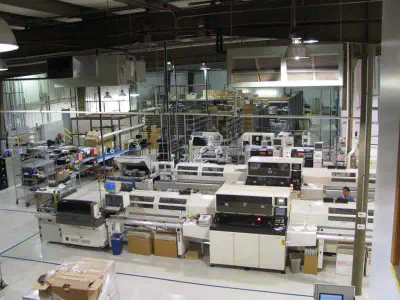In industrial environments where machinery operates at high speeds, incorporates sharp
tools, or processes materials that can pose risks, machine guarding doors stand as an essential line of defense.
These engineered barriers are designed to protect workers from accidents and prevent debris from straying outside
the operating area. This article highlights the significant role that machine guarding doors play in enhancing
safety and productivity for businesses.
The Imperative for Machine Guarding
With stringent occupational safety regulations and the inherent risks of operating heavy
machinery, businesses need to be vigilant in implementing protective solutions. Machine guarding doors provide a
physical barrier that prevents access to areas with dangerous operations. Their presence is crucial not only for
compliance with standards such as those set forth by OSHA, but also for fostering a safe workplace culture.
Types of Machine Guarding Doors
There are various types of machine guarding doors, each catering to different safety needs
and machinery types:
Rolling Doors and Curtains: These are suitable for larger machinery and can be designed to
swiftly roll down or across, acting as a barrier during operations.
Folding Doors: Employing a bi-fold action, these doors conserve space while providing robust
protection.
Sliding Doors: Ideal for restricted spaces, they offer quick access and can be automated for
ease of use.
Swing Doors: Commonly used for smaller enclosures or areas that require frequent access,
these doors are simple yet effective.
Materials and Construction
Machine guarding doors are constructed from various robust materials designed to withstand
significant impact. These can range from high-strength polycarbonates that allow visibility of the machinery in
operation to metal barriers for operations with higher risk levels. The selection of materials often reflects the
balance between the need for visibility and the level of protection required.
Integration with Control Systems
Modern machine guard doors can be integrated with the machinery's control systems, allowing
the doors to act not only as a physical barrier but as part of the safety protocol. Doors can automatically lock
when machinery is in operation and only provide access once the machinery has ceased movement and is in a safe
state.
Visibility and Lighting
Ensuring that workers can see moving parts without being exposed to risks, clear machine
guard doors are often preferred. These materials, combined with effective lighting solutions, help maintain
awareness and contribute to the safe operation and monitoring of the machinery.
Environmental Considerations
Machine guarding doors do more than just protect personnel; they also play a part in
controlling the environmental conditions around machinery. From containing noise and dust to maintaining temperature
zones, the doors can contribute to a more controlled and compliant working environment.
Ergonomic Design for User-Friendliness
Ease of use is a critical aspect of machine guard doors. Ergonomic designs ensure that the
doors contribute to a more efficient workflow, with handles, switches, and barriers positioned for convenient
operation without compromising safety.
Customization Options
Understanding that every industrial setting has unique needs, manufacturers of machine
guard doors often provide customizable options. Customized dimensions, specific material types, and integration with
various control systems allow machine guard doors to meet particular industrial requirements.
Maintenance and Longevity
For machine guarding doors to remain reliable, regular maintenance is required. This
involves checking the integrity of materials, ensuring moving parts are well-lubricated and free of debris, and
verifying the proper function of safety interlocks and control integrations. The longevity of these doors is
critical for maintaining ongoing safety standards.
Compliance with Safety Regulations
Compliance with national and international safety regulations is imperative. Machine
guarding doors must meet specific standards to ensure they provide adequate protection; this includes ISO standards,
OSHA regulations, and other industry-specific safety requirements.
Safety Training and Education
Alongside the physical presence of guarding doors, proper safety training and education are
vital. Personnel should be aware of the risks associated with machinery, understand how to operate guarding doors
safely, and be familiar with emergency protocols.
The Role of Machine Guarding Doors in Industrial Efficiency
While safety is the primary objective, machine guarding doors also play a role in
efficiency. By minimizing the potential for accidents and injuries, these doors can help keep operations running
smoothly and prevent costly downtime. Ensuring the safety of workers can also lead to improved morale and a more
focused, productive team.
Investing in Safety and Assurance
Investing in high-quality machine guarding doors demonstrates a commitment to safety and
can also be financially prudent. By protecting against accidents and ensuring compliance with safety regulations,
businesses can avoid fines, medical costs, and productivity losses associated with workplace injuries.
Machine guarding doors are a fundamental component in the hierarchy of safety measures
within the industrial sector. By providing durable, reliable barriers between workers and machinery, they help to
prevent injuries, boost confidence, and allow businesses to maintain a culture of safety. Moreover, by embracing
technological advancements and proper safety practices, organizations can simultaneously enhance their operational
efficiency and ensure the well-being of their employees. In an era where industrial automation continues to advance,
never has it been more crucial to invest in robust safety solutions like machine guarding doors. Give Industrial
Door Company a call today to get a quote on a machine guarding door.

